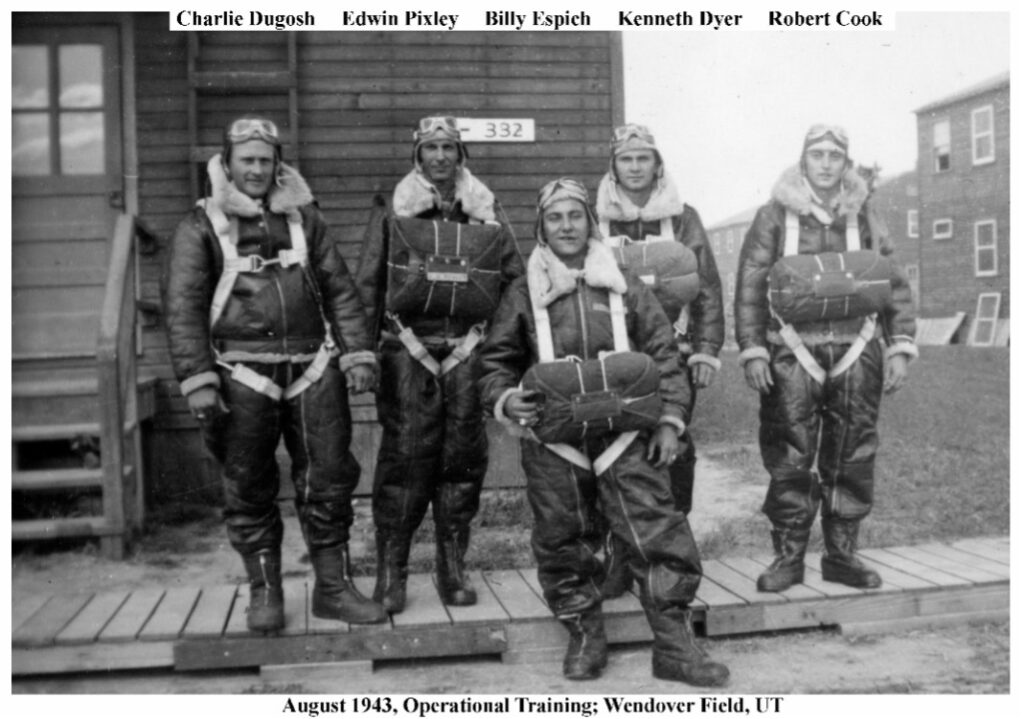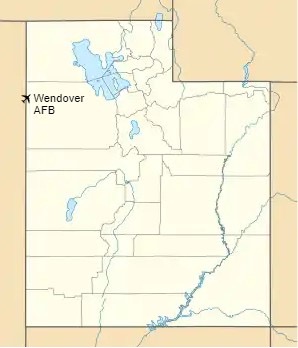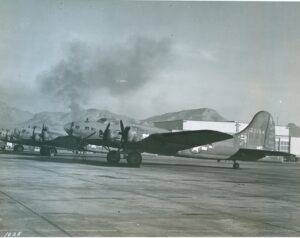
Imagine yourself flying over Germany in 1943 as an Airman in the United States Army Air Forces. It is five o’clock in the morning. You and your nine other crewmates sit quietly in position, waiting to arrive at your bombing destination. While you have only spent 150 hours training in that bomber, you know every single nook, cranny, and combat capability of this aircraft. You haven’t seen your wife in months; she has just given birth to your first child, Susie. The journey has felt like a lifetime, even though you only enlisted the prior year. This is merely a snapshot of what life was like for a B-17 crew member.
THE B-17 FLYING FORTRESS
Developed in the 1930s by Boeing, the B-17 Flying Fortress was a four-engine heavy bomber used by the U.S. Army Air Forces during World War II. Boeing designed it to penetrate deep into enemy territory, and it became highly revered for its ability to incur damage while still in flight. The B-17’s mission impact also proved the effectiveness of daylight strategic bombing, which many were skeptical about before the war. During the plane’s public debut in 1935, reporter Richard Williams of The Seattle Times coined the bomber’s iconic nickname when he exclaimed “Why, it’s a Flying Fortress!” Recognizing the value of the name, the Boeing Company had it trademarked.
WENDOVER, UTAH
 Many of the B-17s crews trained at Wendover Army Air Base, Utah. Wendover, originally a railroad town with a population of 100 people, became a U.S. Army Air Forces training hub for many World War II aircraft and their crews. Wendover’s isolated location, year-round desert conditions and proximity to a larger city (Salt Lake City is 100 miles away), made the base ideal for training operations during the 1940s. When the base established its presence in 1940, Wendover’s population spiked up to around 20,000 people.
Many of the B-17s crews trained at Wendover Army Air Base, Utah. Wendover, originally a railroad town with a population of 100 people, became a U.S. Army Air Forces training hub for many World War II aircraft and their crews. Wendover’s isolated location, year-round desert conditions and proximity to a larger city (Salt Lake City is 100 miles away), made the base ideal for training operations during the 1940s. When the base established its presence in 1940, Wendover’s population spiked up to around 20,000 people.
Despite this increase in activity, Wendover left much to be desired for newly stationed GIs. The most exciting times for military members included drinking on the salt flats, gambling and enjoying USO Tour acts such as Bob Hope and Eddie Bracken. Often, GIs and their families traveled to Salt Lake City to experience a heightened sense of civilization.
TRAINING AT WENDOVER
As a heavy bomber training base, Wendover worked with many B-17s. Seven of the twenty heavy bomber groups trained at Wendover and flew B-17s, including the 306th, 100th, 379th, 384th, 388th, 393rd and the 457th. Many of these groups trained at Wendover for only a few short months before they deployed to the European Theater. This type of high turnover was common for U.S. Army Air Force pilots as the demand for air power increased in both the European and Pacific Theaters. For most of these pilots and their crew, it was their first time flying and operating an aircraft.
 Due to this high tempo training, many of Wendover’s heavy bomb groups suffered plane crashes and fatalities. One horrible loss occurred on 2 January 1943 when a B-17F from the 397th Bomb Group crashed into an 11,000 foot peak in the East Humboldt Mountain Range between Wells and Elko, Nevada. The crash site was not discovered until 24 June 1943. [1] Some claim the crashed occurred due to the lack of visibility, as the crew may have encountered scattered snow showers while possibly flying strictly by instruments. None of the crew survived, and despite the summer months, recovery proved difficult as snow remained on the mountains.
Due to this high tempo training, many of Wendover’s heavy bomb groups suffered plane crashes and fatalities. One horrible loss occurred on 2 January 1943 when a B-17F from the 397th Bomb Group crashed into an 11,000 foot peak in the East Humboldt Mountain Range between Wells and Elko, Nevada. The crash site was not discovered until 24 June 1943. [1] Some claim the crashed occurred due to the lack of visibility, as the crew may have encountered scattered snow showers while possibly flying strictly by instruments. None of the crew survived, and despite the summer months, recovery proved difficult as snow remained on the mountains.
The last group of B-17s at Wendover belonged to the 457th Bomb Group, that would eventually fly for the Eighth Air Force, and trained from December 1943 – January 1944. By this point, many bomb groups at Wendover were already training in the B-24.
OTHER MISSIONS AT WENDOVER
An important bomb group that trained at Wendover was the 509th Composite Group. This unit was tasked with the operational deployment of nuclear weapons over Japan. Led by Lieutenant Colonel Paul W. Tibbets, the 509th CG crews flew in Silverplate B-29s that were specifically configured to carry atomic bombs. This group trained at Wendover from December 1944 until deploying to Tinian, Marianna Islands in late May 1945. Wendover’s isolated location made the top secret mission ideal for training operations.
No doubt, Wendover’s involvement in the Second World War benefited the United States’ ability to prevail in that the conflict. Between churning out trained pilots and supporting crews with skills crucial for the aerial combat mission, Wendover allowed for Airmen to prepare for the wartime ahead. Many B-17 crew members cycled through Wendover for their training, which allowed for successful bombing missions in the European Theater. Despite training mishaps, crashes and even failed missions overseas, the B-17 proved impactful for the Allied War mission.
1. From crash report 24 June 1943 in the Elko Daily Free Press
